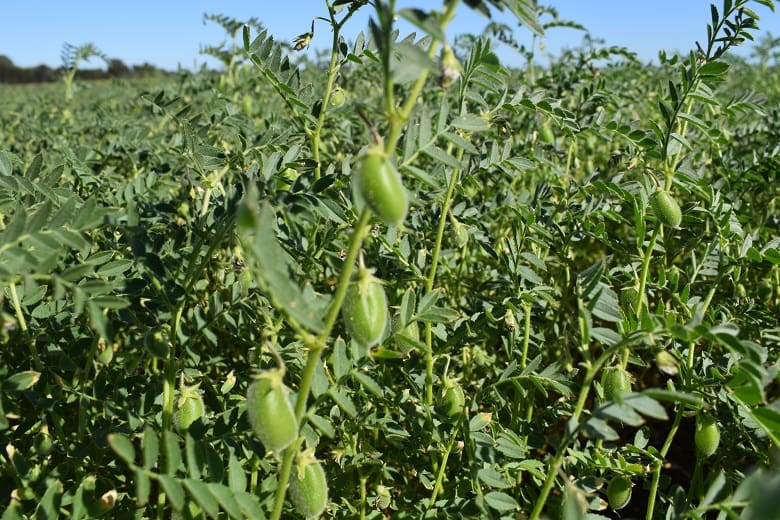QUALITY planting seed for the 2019 chickpea crop may be in short supply due to a shortage of chickpea seed from the depleted 2018 crop when less than 10 per cent of the normal area was planted – and even less harvested.
The shortfall raises issues of seed quality for this season which may be variable because of drought, frost, late rain and storage conditions.
There is also a large amount of chickpea seed from the 2017 crop that did not get planted in 2018.
Most of this 2017 crop seed, which is estimated to be about 44,000 tonnes, has been stored on farm, under varying conditions, including in closed field silos.
Some of this 2017 crop seed was also treated with fungicide in anticipation for sowing in 2018 and growers will be keen to use this to plant their 2019 crop.
Pulse Australia industry development agronomist for the northern region, Paul McIntosh, said it was particularly important this year for growers to check the viability of their chickpea seed prior to sowing.
“I urge everybody who has stored chickpea seed from the last couple of years to check its germination, viability and vigour before they plant the seed,” he said.
“It’s possible they might have to be planting down to six or eight inches (15-20cm) again, and they’ll need good quality seed for those deep planting operations.”
Mr McIntosh said 2018 was a poor year for chickpea production which meant many people who didn’t plant a crop will be relying on old seed from 2017 for this year’s planting.
“It is the seed that is in farmers’ silos that I am more worried about. Much of the seed that will be used will be from farmers’ silos because it will be the cheapest source of seed,” he said.
“So, they really need to check the germination and vigour because it has just been sitting in silos which have been extremely hot. For seed that has been stored outside silos, that heat we have had could really kill the germination.”
Germination/viability test
One way to find out if seed from 2017 and 2018 crops is suitable for planting the 2019 crop is to have it tested.
The New South Wales Department of Primary Industries at Tamworth tests chickpea seed for germination, seed borne pathogens (Ascochyta, Botrytis) and mould.
This is a free testing service supported under the Grains Agronomy and Pathology Partnership bilateral agreement between NSWDPI and the Grains Research and Development Corporation.
Sampling: for each lot to be tested, collecting seed from several locations in the storage system provides a more representative sample and thus more informative results. If the sample is only from the top (or bottom) of a silo/bin, the results apply only to that part of the silo/bin. Send a total of 500g per lot (silo/bin).
Delivering samples: Seed samples may be handed to NSW DPI plant pathologist, Kevin Moore, at the 2019 Dubbo, Spring Plains, Goondiwindi or Warra GRDC Updates or left with organisers at the Coolah and Moonie Updates who will pass them on.
Alternatively, deliver or post samples to:
Kevin Moore/Gail Chiplin,
Tamworth Ag Institute,
4 Marsden Park Rd,
Calala, NSW 2340
Grain Central: Get our free cropping news straight to your inbox – Click here


HAVE YOUR SAY